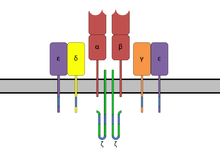디오스 히에론(리디아)
Dios Hieron (Lydia)외데미슈/이즈미르에서 북동쪽으로 9km 떨어진 곳에 있다(참조: Tmolos'ta kutsal bir kent Dioshieron, Hüseyin üreten, 국제 사회 연구 저널, 제9호, 제44호: 562-578) Dios Hieron (그리스어: ὸὸὸὸὸὸ::::ὸὸὸ it it it it it it it)이 도시는 페르가몬 [2]왕국의 합병으로 로마 공화국과 아시아의 로마 속주의 일부가 되었다.It also bore the name Diospolis (Διόσπολις),[3] and was cited by the sixth century Byzantine geographer Stephanus of Byzantium under that name.[4]이곳은 7세기에 크리스토폴리스 또는 크리스토폴리스로 이름이 바뀌었고 12세기부터는 [2]피르지움 또는 피르지온으로 알려졌습니다.피르지온은 1307년에 터키에 함락되었고 아이딘의 [2]벨릭의 수도가 되었다.The town minted coins in antiquity, often with the inscription "Διοσιερειτων".[5]
그것의 장소는 아시아 터키 [6][7]비르기 근처에 위치해 있다.
주교직
로마 시대 도시에는 고대 기독교 주교가 있었고 적어도 451년부터 주교좌로 증명되었다.그것은 에페소스의 속주였고, 12세기 후반 독립된 [2]대도시가 될 때까지 그 아래에 남아 있었다.
고대부터 알려진 네 명의 주교가 있다.
- 스테판은 431년 에페소스 평의회에 참가했다
- 유스토르지오스는 칼케돈 평의회(451년)에 참석하지 않았고 그의 수도 에페소스의 스테판도 그를 대신해서 서명했다.
- 조에투스는 680년 콘스탄티노플 평의회와 692년 트룰로 평의회의 아버지 중 하나였다.
- 피르지온의 스테파노는 869-870년과 879-880년에 콘스탄티노플 총대주교 포토오스 1세의 문제를 다룬 콘스탄티노플의 두 평의회에 참가했다.
오늘날 디오시에론은 로마 가톨릭교회에서 [8]명목상의 교구로 존속하고 있으며, 지금까지 교구가 [9][10]배정된 적은 없다.
레퍼런스
- ^ Ptolemy. The Geography. Vol. 5.2.
- ^ a b c d Nesbitt, John W.; Oikonomides, Nicolas, eds. (1996). Catalogue of Byzantine Seals at Dumbarton Oaks and in the Fogg Museum of Art, Volume 3: West, Northwest, and Central Asia Minor and the Orient. Dumbarton Oaks Research Library and Collection. p. 45. ISBN 0-88402-250-1.
- ^ William Hazlitt (1851). The Classical Gazetteer. Vol. p. 137.
- ^ Stephanus of Byzantium. Ethnica. Vol. s.v. Διόσπολις.
- ^ "Lydia, Dioshieron - Ancient Greek Coins". WildWinds.com. Retrieved 2019-05-29.
- ^ Richard Talbert, ed. (2000). Barrington Atlas of the Greek and Roman World. Princeton University Press. p. 56, and directory notes accompanying.
- ^ Lund University. Digital Atlas of the Roman Empire.
- ^ 피우스 보니파시우스 감스, 에피스코룸 에클레시아에 가톨릭 시리즈, 라이프치히 1931, 페이지 444.
- ^ Dioshieron (Catholichierachy.org )
- ^ Dioshieron (GCatholic.org )
![]() 이 문서에는 현재 퍼블릭 도메인에 있는 출판물의 텍스트가 포함되어 있습니다.
이 문서에는 현재 퍼블릭 도메인에 있는 출판물의 텍스트가 포함되어 있습니다.
좌표:38°13′39§ N 28°05°00°E/38.2276°N 28.0833°E


